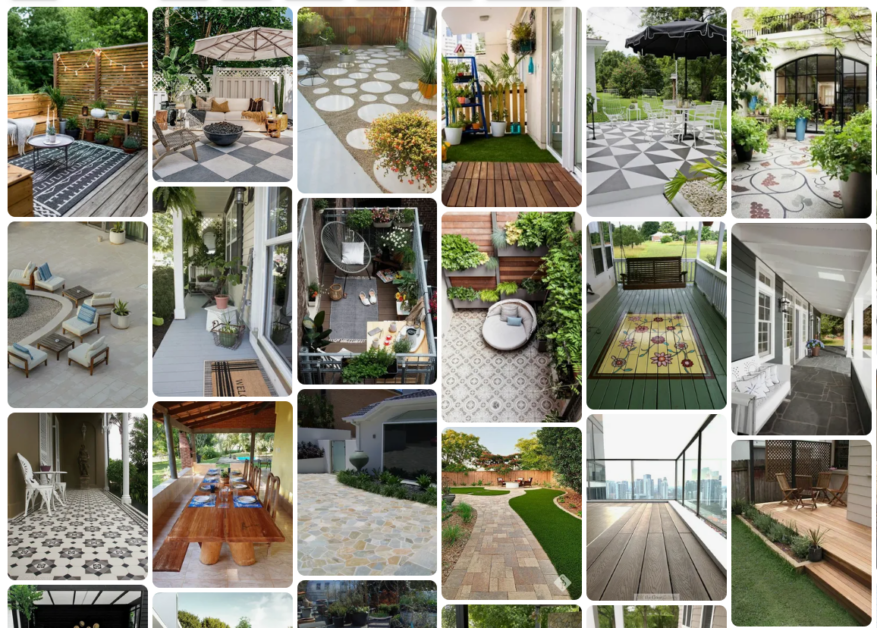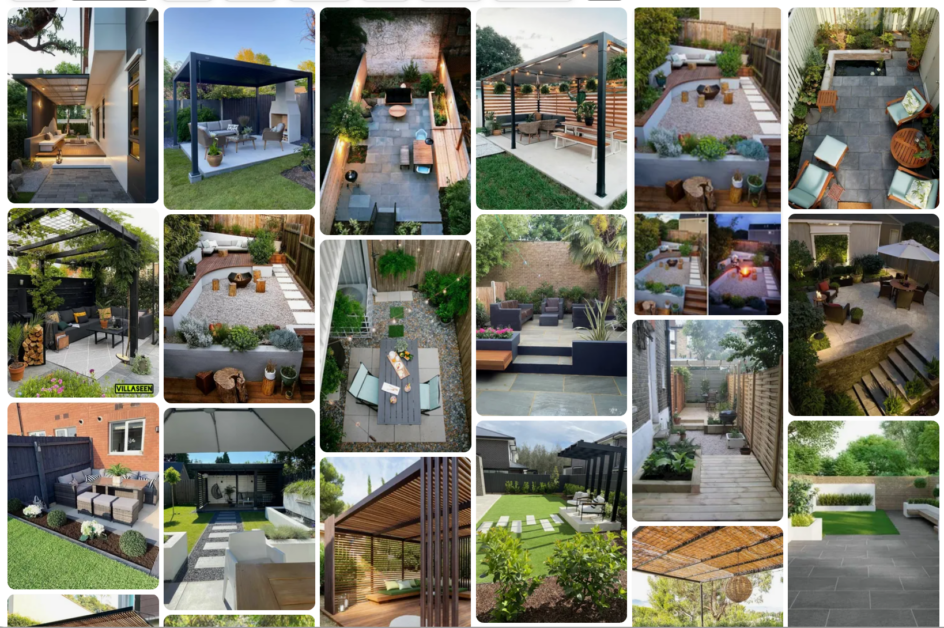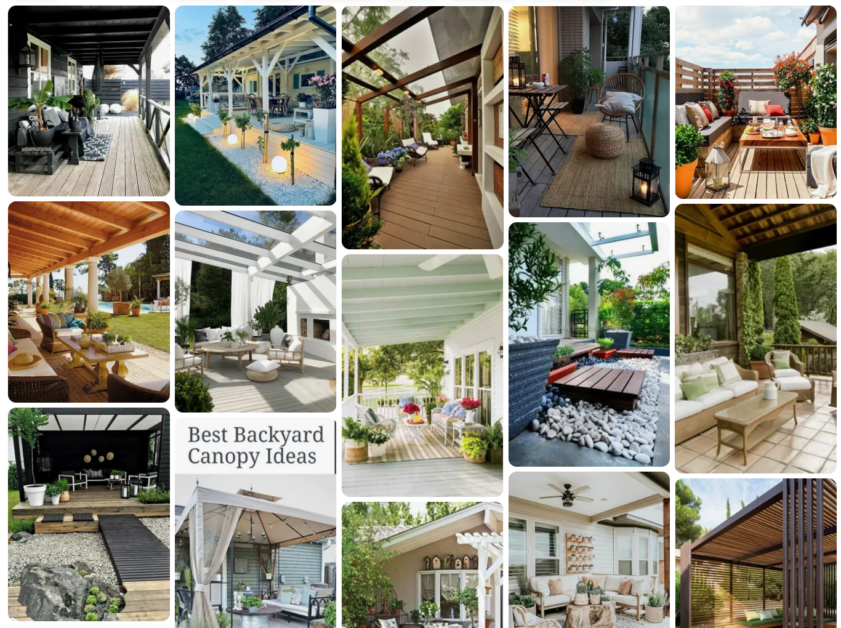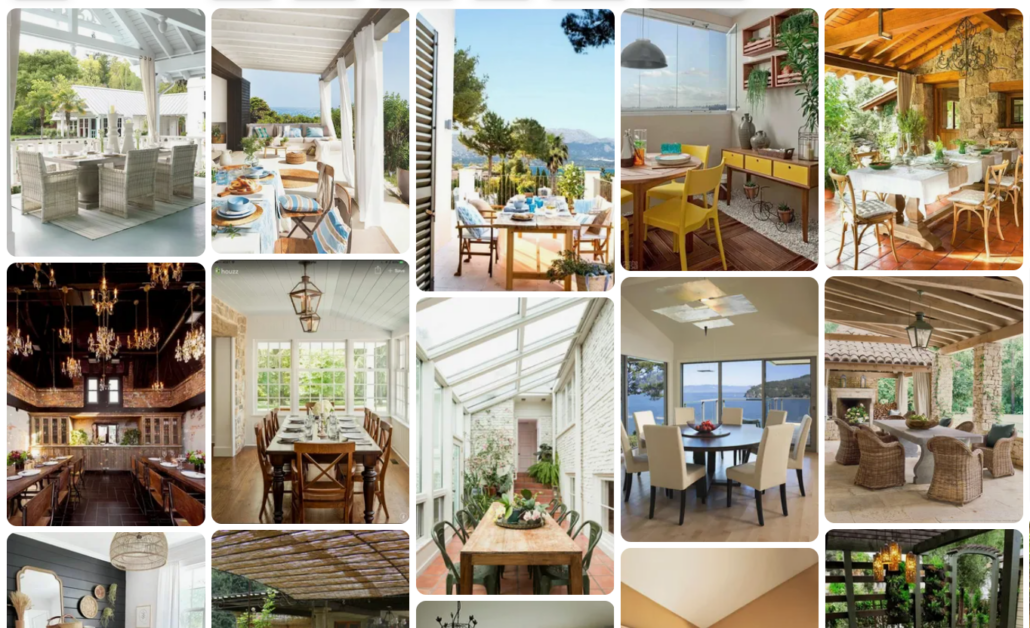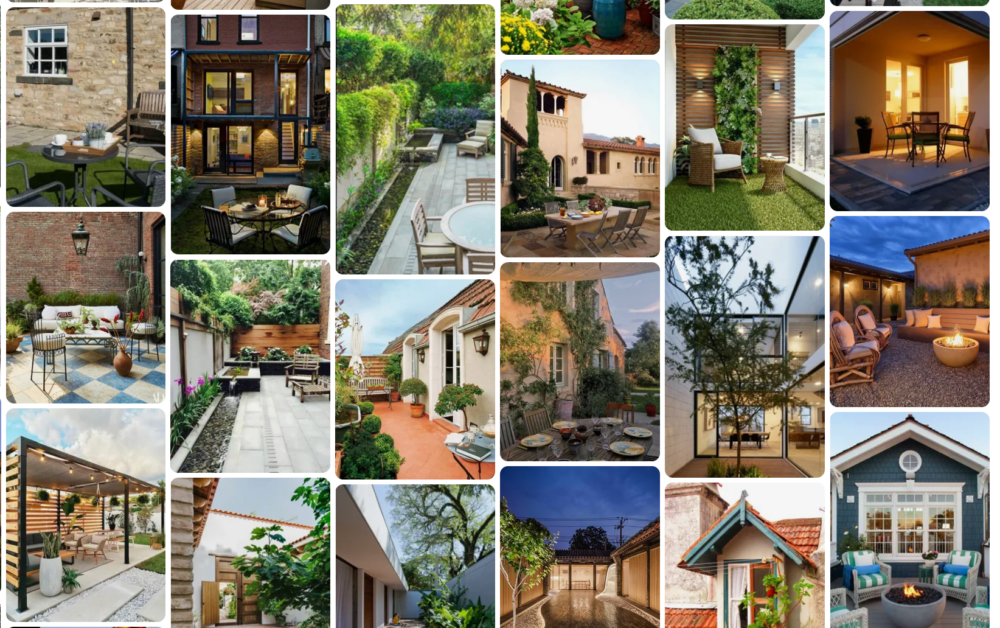Do you want to redesign your patio floor? Then you have many options. We present the most common coverings
Wood, tiles or concrete? What the patio floor should look like is often not an easy question to answer.
Rather, you have to weigh up appearance, durability and cost. We present different surfaces for your future patio floor.
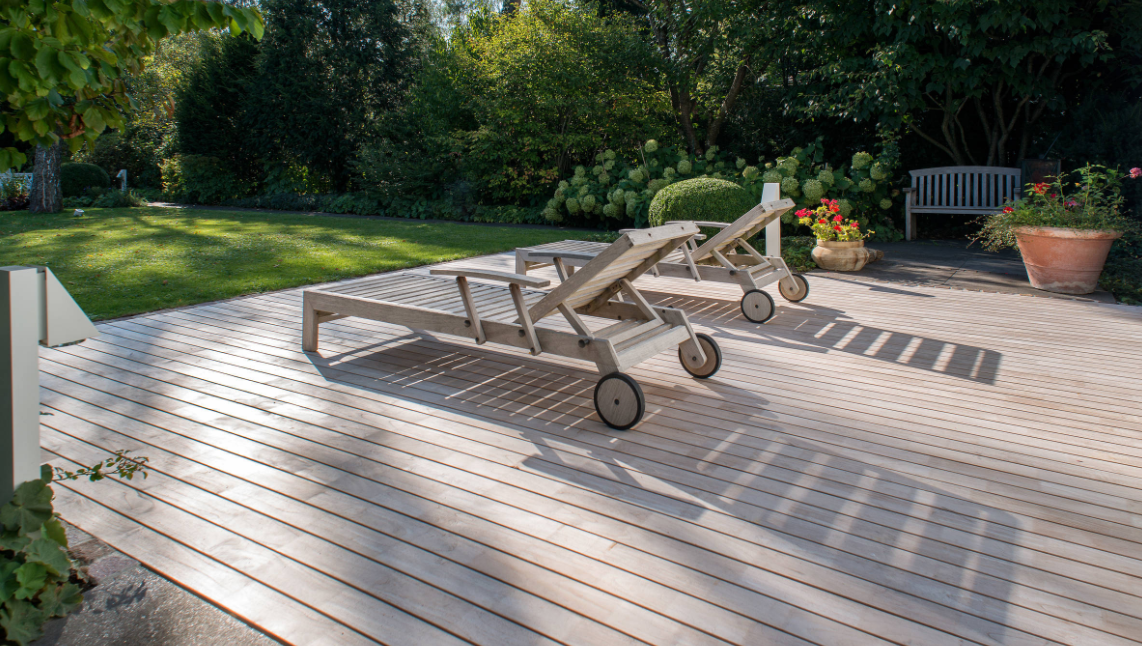
1. Wooden patio floor
Wood is one of the most popular coverings for patio floors. A wooden floor has a number of positive properties: the natural material grows back, lives with the plant and changes over time.
The floor ages beautifully and creates a pleasant atmosphere. There are various options for materials and constructions for a wooden patio floor.
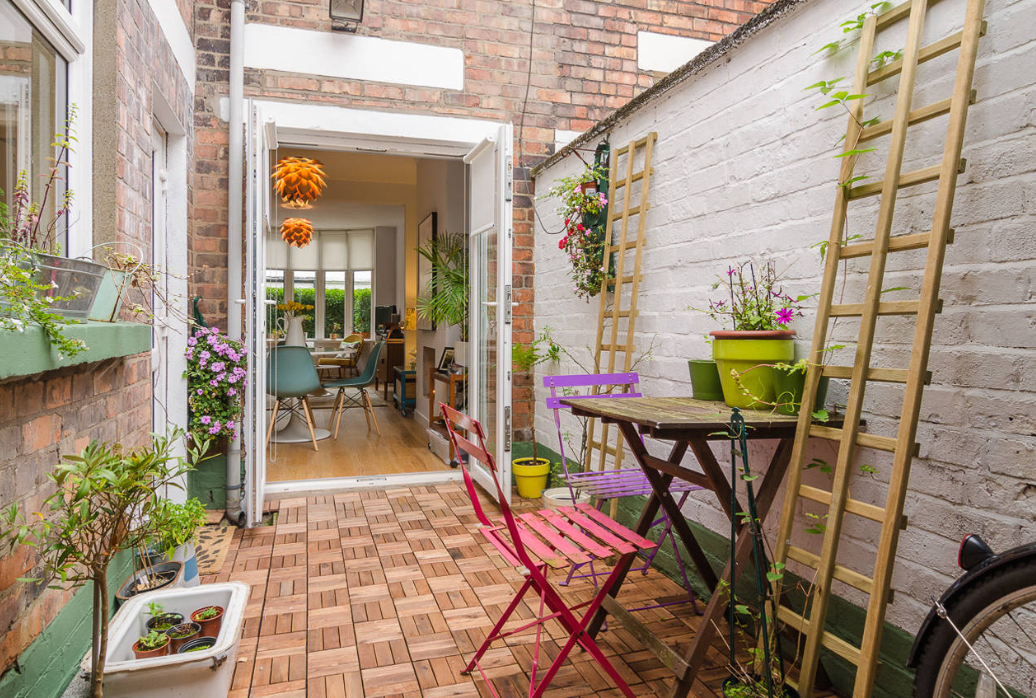
Wooden decking.
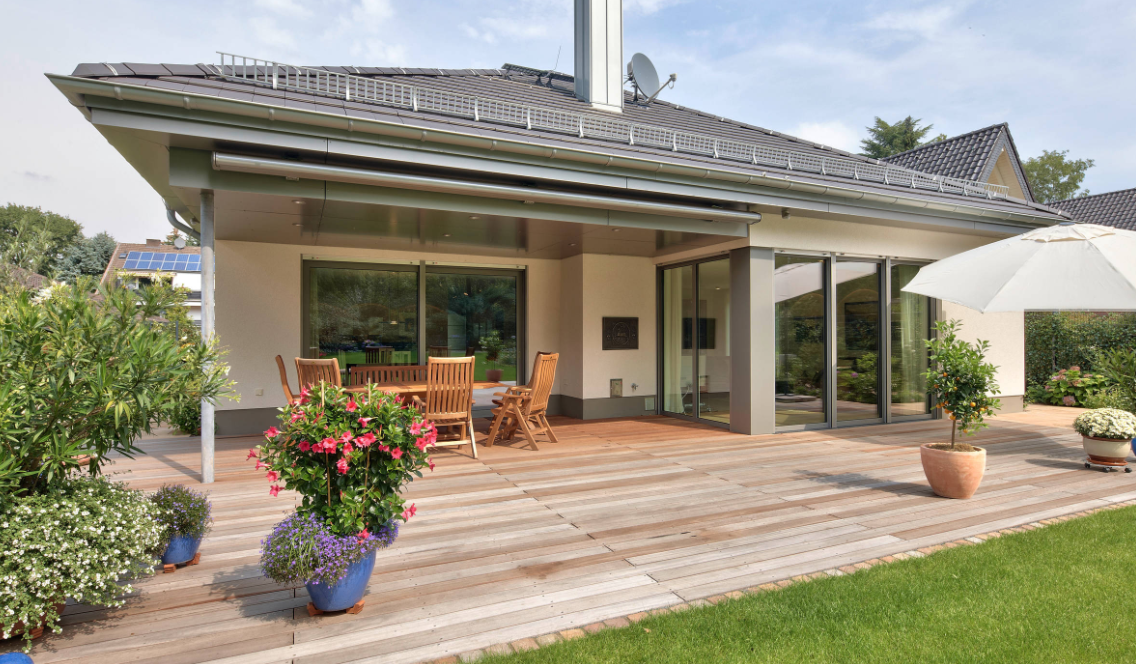
Wooden click tiles
Which wood is suitable for patio floors?
- Larch: inexpensive, does not bend , does not splinter, ages beautifully, comes from local forests. "The disadvantage here is the high resin content, which is why you sometimes have to turn one or two boards or leave them out completely. This is less the case with Siberian larch, but this wood, which is felled from primeval forests, is not very sustainable."
- Douglas fir: Originally from North America.
- Oak: "It is very durable, comes from local forests and looks excellent over time," "You often read that oak is prone to cracking. Fortunately, we have not had such experiences so far. Oak has other disadvantages, such as the relatively high price and the tendency to turn black when it comes into contact with metal. So it should be screwed with stainless steel screws and care should also be taken with garden furniture, etc."
- Bamboo boards: Also very durable, naturally turn grey. Made from renewable raw materials. Stefan Wentzel – New Garden Design : “Bamboo boards are artificially produced. But they are very hard and definitely recommendable. In my opinion, much better than WPC.”
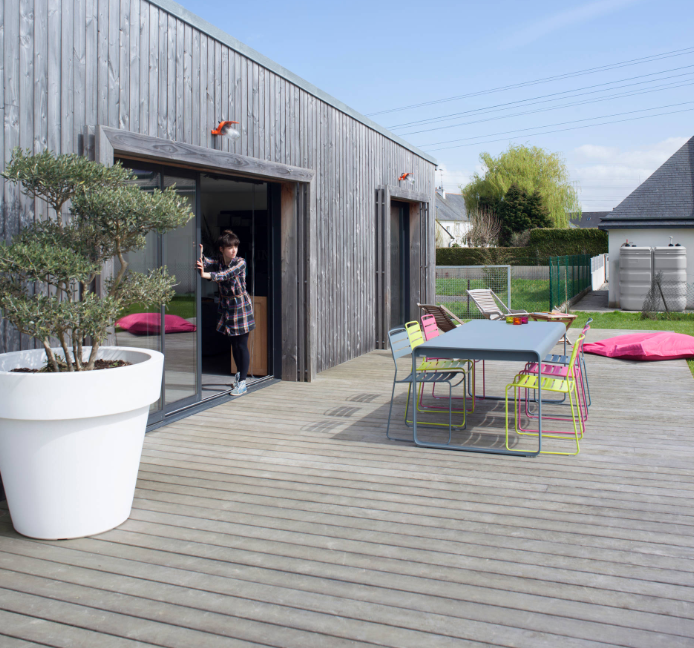
Sealing wooden decking on the terrace.
Before laying, the professional treats larch and Douglas fir against blue stain and rot, as they are susceptible to fungal attack.
The wooden decking is treated with special decking oil. These oils penetrate deep into the wood and form a protective film with pigments and natural resins.
Decking specialists are familiar with this and carry out the work steps.
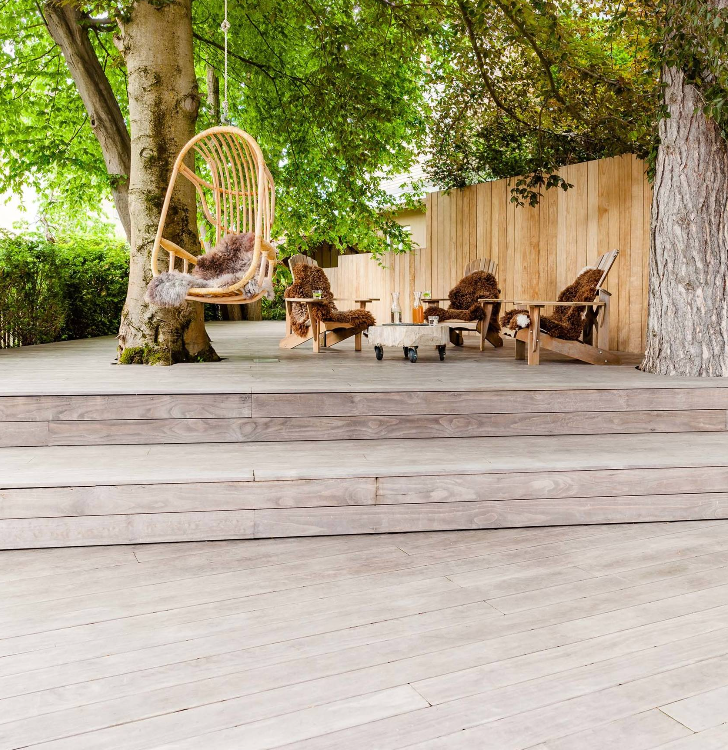
2. Technically modified wood as terrace flooring
Local wood is not as robust and moisture-resistant as tropical wood. In order to avoid their questionable use, processes have recently been developed that make local wood last longer (see also "Durable terraces using technically modified wood" ).
-
Thermally modified wood:
Heat-treated wood that lasts longer. Ash and pine in particular are often thermally treated and then turn into thermo-ash and thermo-pine. " Thermo-ash is very durable, but must be installed by professionals who are familiar with the somewhat more brittle material.
-
Chemically modified woods:
These woods, e.g. Acacia wood, are soaked in acetic acid (acetylation) or furfur alcohol (furfurylation), are resistant to pests and fungi and hardly absorb any water. Kessler Lifestyle : "Acacia is a wood that hardly swells or rots and is therefore durable for a long time. We are talking about an average of 60 years when used as decking or facade wood. In terms of price, Accoya is much more affordable than tropical woods or thermally modified wood."
-
Hydrophobic wood:
By soaking the wood in paraffin or other water-repellent substances, the lifespan of these woods outdoors is increased.
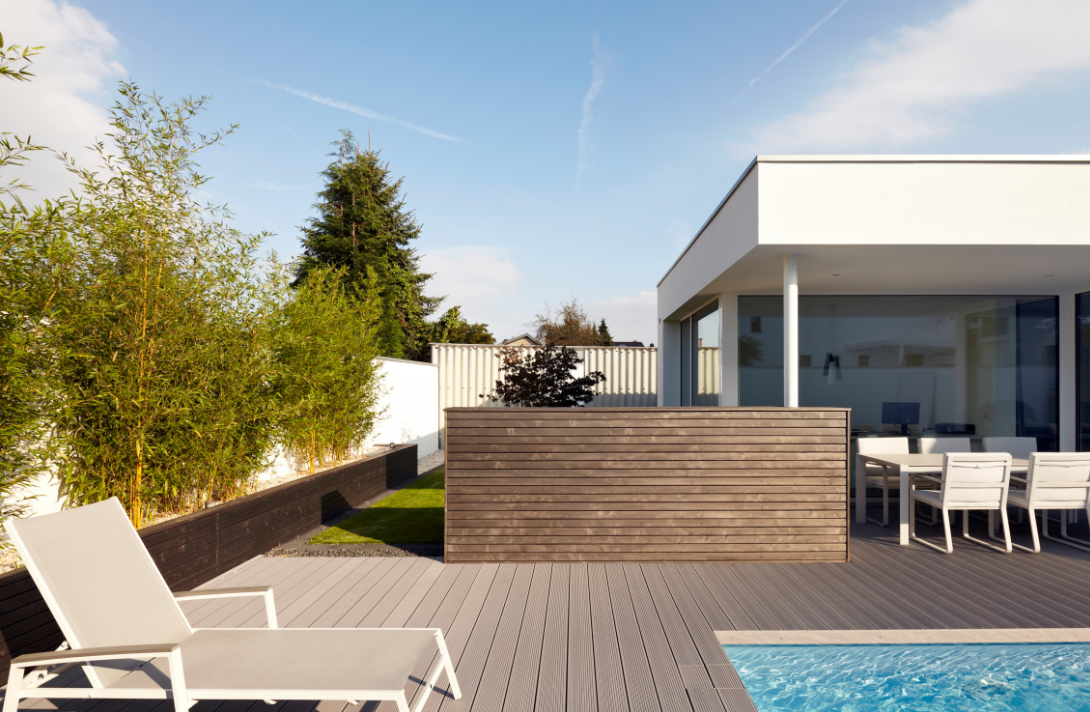
3. Decking made from WPC
Decking made from “wood plastic composite”, or WPC for short, is often used outdoors because it looks like wood but is more robust thanks to its plastic content.
“Our experience is that this material is extremely easy to work with. The material’s faithfulness to shape and color – wonderful, homogeneous surfaces – is very precise.
is usually made up of 60 percent wood chips and sawdust and 40 percent plastic with the appropriate additives.
Like wooden planks, it is laid on a substructure. There are now also click systems for decking. This makes laying easier.
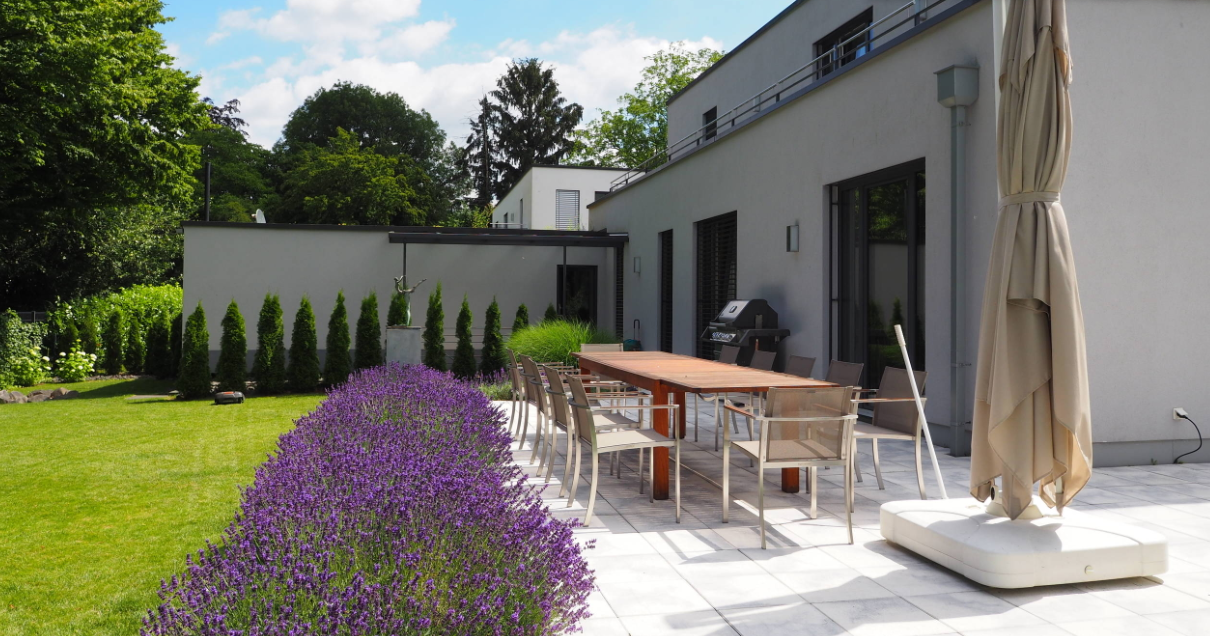
4. Terrace floors made of tiles and slabs
Cement tiles for the patio floor
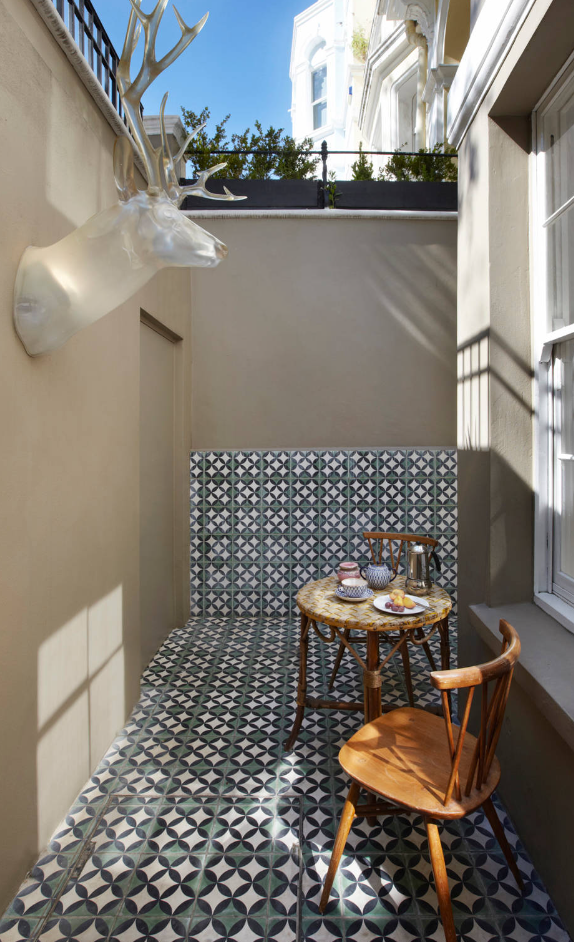
Terrace floors made of porcelain stoneware
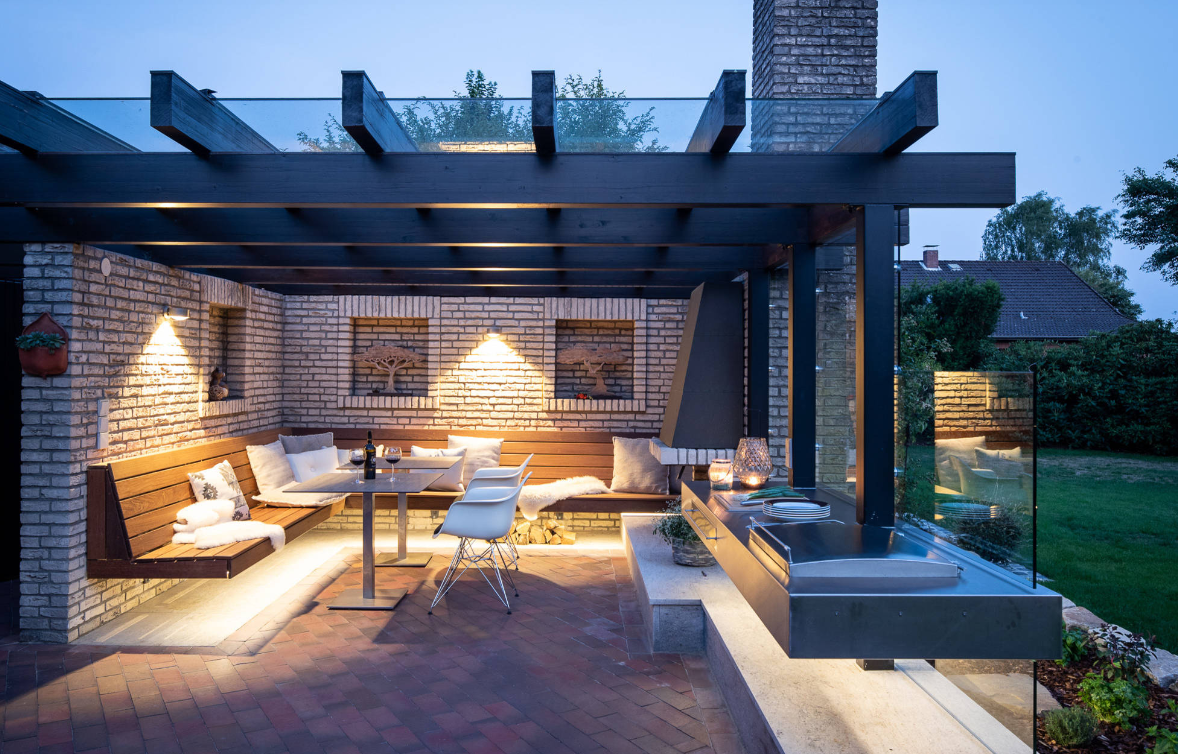
5. Terrace floor made of paving
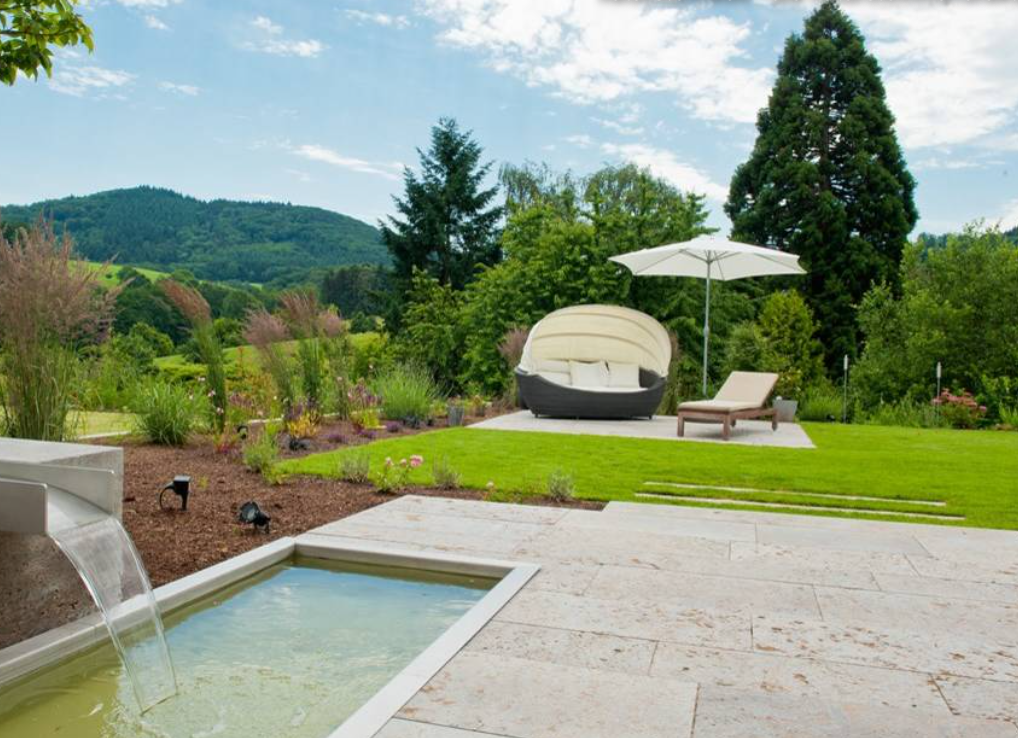
6. Natural stone as a patio covering
Natural stone is a bit more expensive than other coverings, but it is also particularly beautiful. Not all natural stone is suitable as a patio floor.
Some are too soft for this task, others are not frost-proof or too slippery when it rains. Suitable natural stone is laid on a bed of gravel.
This subsurface increases its weather resistance, as rain and moisture can drain off and seep away easily.
Suitable:
- Granit
- Basalt
- poriger Limestone
- Muschelkalk
- Travertine
- slate
Not suitable unless specially impregnated:
- Marble
- certain sandstones
- fine-pored limestone
When caring for natural stone floors outdoors, we recommend using a pH-neutral cleaning agent.
Cheap soft soap, also known as green soap, is more suitable than many of the expensive cleaning agents that are sold commercially
Polygonal slabs for the terrace
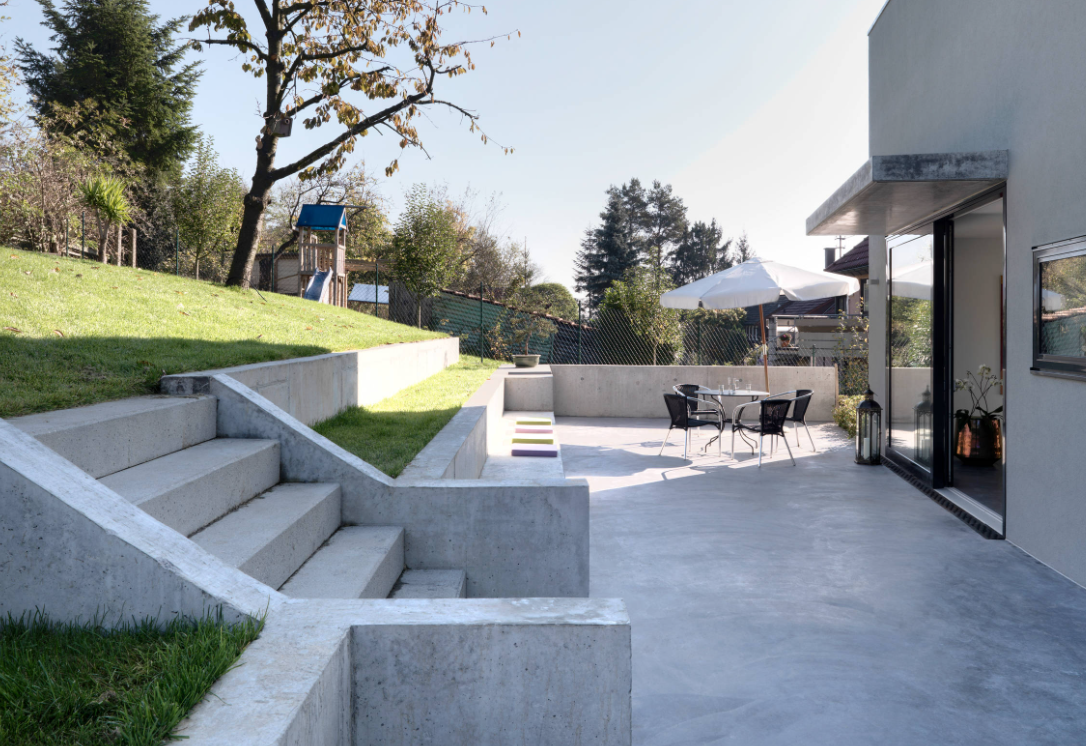
7. Concrete patio floor
Concrete patios are almost indestructible if they are professionally installed. To create such a seamless floor , the soil is excavated and the subsoil is compacted. The liquid concrete is poured onto a layer of gravel or basalt.
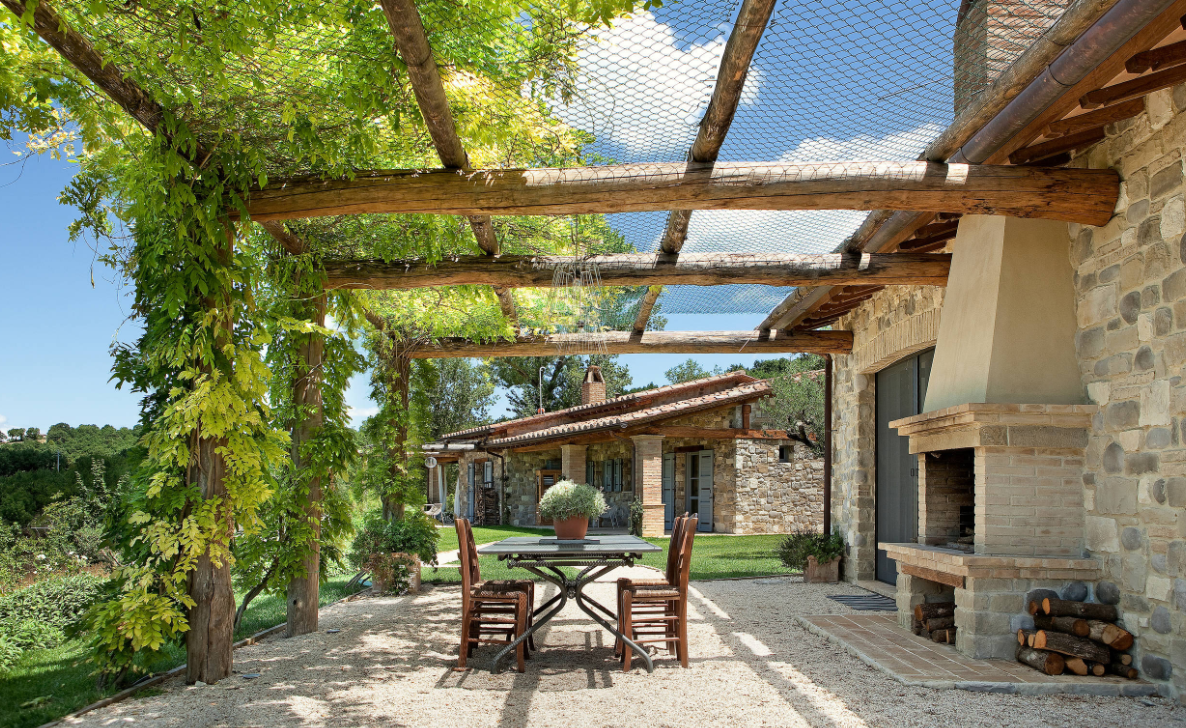
8. Gravel as a patio floor
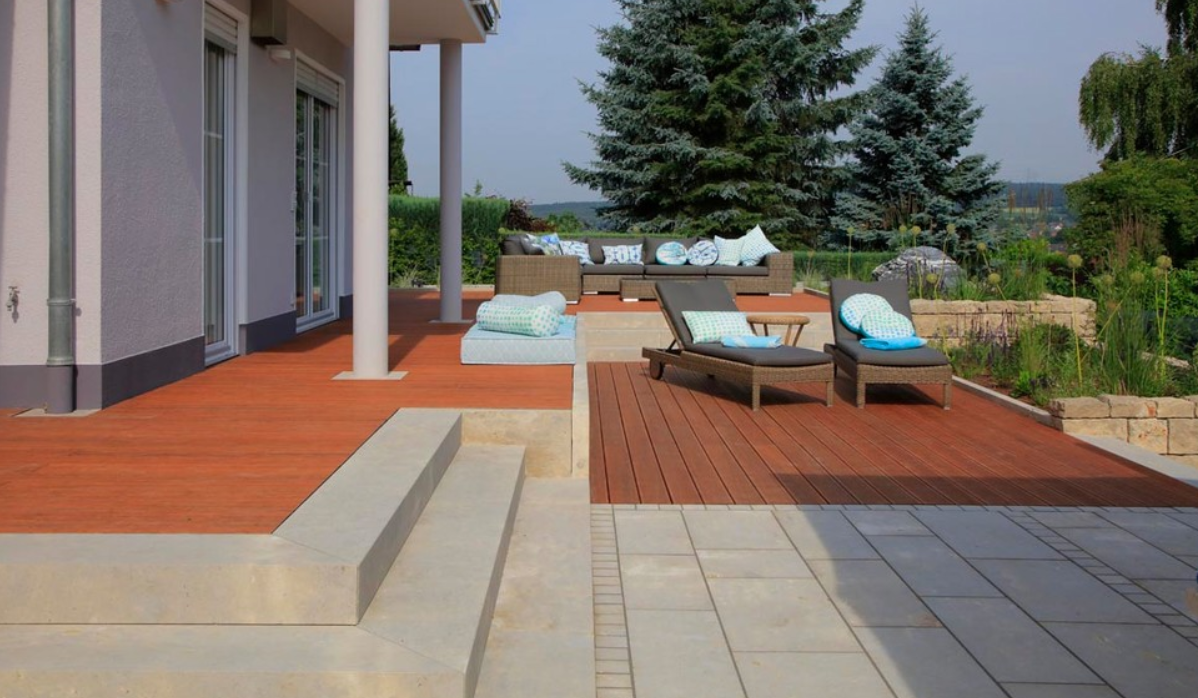
9. Terrace floors made from combined materials
One material is not always the only right one. If there are differences in height or different functional areas, it can be very effective to mix different coverings.
